#ESP8266 NodeMCU 12E
Explore tagged Tumblr posts
Text
Buy nodemcu esp8266 cp2102 at Affordable Price in Ainow

The ESP8266 NodeMCU CP2102 board has ESP8266 which is a highly integrated chip designed for the needs of a new connected world. It offers a complete and self-contained Wi-Fi networking solution, allowing it to either host the application or to offload all Wi-Fi networking functions from another application processor. ESP8266 has powerful onboard processing and storage capabilities that allow it to be integrated with the sensors and other application specific devices through its GPIOs with minimal development up-front and minimal loading during runtime. Its high degree of on-chip integration allows for minimal external circuitry, and the entire solution, including the front-end module, is designed to occupy minimal PCB area. The ESP8266 NodeMCU CP2102 development board – a true plug-and-play solution for inexpensive projects using WiFi. The module arrives pre-flashed with NodeMCU firmware so they’re ready to go – just install your USB driver (below). ESP-12 Lua Nodemcu WIFI Dev Board Internet Of Things board contains a full ESP8266 WiFi module with all the GPIO broken out, a full USB-serial interface, and a power supply all on the one breadboard-friendly package. This board is pre-flashed with NodeMCU a Lua-based firmware for the ESP8266 which allows easy control via a neat scripting language Lua so you’re ready to go in just a few minutes. The ESP-12 Lua Nodemcu WIFI Dev Board Internet Of Things with ESP8266 is an all-in-one microcontroller WiFi platform that is very easy to use to create projects with WiFi and IoT (Internet of Things) applications. The board is based on the highly popular ESP8266 WiFi Module chip with the ESP-12 SMD footprint. This WiFi development board already embeds in its board all the necessary components for the ESP8266 (ESP-12E) to program and upload code. It has a built-in USB to serial chip upload codes, 3.3V regulator, and logic level converter circuit so you can immediately upload codes and connect your circuits.
0 notes
Text
Fireless Cracker Tree with Sound, WS2811, 5V, Program & Coding-in English-Part-1 , with Code.
Fireless Cracker Tree with Sound, WS2811, 5V, Program & Coding-in English-Part-1 , with Code.
PIXEL LED LIGHT EFFECTS Dear Friends this blog is related to Pixel Led WS2811, 5volt ( not the strip LED). everything is same except to use pixel led ws2811, 5volt as shown below. Code Link:- https://drive.google.com/drive/folders/1I1Y2RZlHznR1OtFofDWVYEYETHbJ4HbL?usp=sharing Or code can be copy-pasted from below:- #include #define neo_pixel_pin 6 #define number_of_neo_pixel 47 #define piezo…

View On WordPress
#ARDUINO UNO#CODING for cracker tree#DIY Electronics fireless cracker tree with sound for School projects#Electric Uncle Hatwale#Electronics fireworks with sound#ESP8266 NodeMCU 12E#Free Code for Oixel Led Cracker Tree & Chakari#LED STRIP PIXEL PROGRAMMED DECOR LIGHTING EFFECTS#Multitech Education for you#PIXEL LED LIGHTING EFFECTS#PIXEL LED LIGHTING EFFECTS WITH SOUND ARDUINO BASED#Programming and Coding for fireless cracker tree#SOUND#ws2811
2 notes
·
View notes
Link
Parte 1: Introduzione
Guida a puntate su ESP8266
Cosa ci fa una guida su un hardware (si ESP8266 è un hardware) che non è Raspberry Pi, su un sito dedicato al Raspberry Pi? Bè, cominciate a leggere, e scoprirete che esistono molti più punti di contatto tra questi due oggetti, di quanto sospettavate. E sopratutto, non esiste (ancora) una documentazione chiara, completa e che parta da zero in italiano su questo oggetto, il che lo rende particolarmente ostico da affrontare per chi è alle prime armi con oggetti del genere. L’innumerevole varietà di versioni hardware e gli svariati firmware differenti, fanno perdere per strada il novellino in una marea di tutorial e guide in inglese, contraddittorie e totalmente differenti tra loro. E allora.. perchè non pensarci noi? Realizzeremo una serie di guide che ci porteranno a scoprire assieme questa piccola scheda, come programmarla, i vari firmware e gli usi pratici.
Ma di cosa stiamo parlando?
L’ ESP8266 si tratta si un SoC (System on Chip) prodotto dalla Cinese Espressif, contiene un microcontrollore, un modulo WiFi con stack TCP-IP completo. Sopratutto, ha un basso costo.
Ok, cosa è un microcontrollore?
Senza divagare troppo nel tecnico, possiamo dire che un microcontrollore (MCU), a differenza di un microprocessore (CPU) è meno raffinato, meno general purpose, più specializzato in un solo compito. Però questo consente di avere più componenti integrate (il processore, la memoria permanente, la memoria volatile e i canali di I/O), il che gli consente di funzionare con pochissimi (a volte nessun) componente esterno, mentre un microprocessore richiede una intera scheda madre e unità esterne, memorie, periferiche. Nei microcontrollori il programma da eseguire viene memorizzato direttamente nella ROM, assieme al firmware. Quindi non è in grado (non necessita) di un sistema operativo, con i relativi vantaggi/svantaggi che questo comporta. Tutto questo li rende molto economici quindi preferiti nelle applicazioni specifiche (calcolatrici, centraline di auto, modem, antifurti, elettrodomestici ecc ecc).
Storia
I microcontrollori esistono di ogni specie e versione, e fino a poco tempo fa non esisteva una configurazione standardizzata, e spesso i maker si creavano da soli la scheda con l’elettronica di contorno utile al loro funzionamento. Questo produceva un hardware diverso per ognuno. Proprio per questo nacque Arduino, che creava una scheda Open Hardware standard con microcontrollore Atmel, e fu un gran successo. Poi nacque l’ESP8266, e il WiFi integrato è stata la sua arma vincente per distinguersi. Vista proprio l’estrema economicità, produttori di terze parti hanno incominciato a commercializzare piccoli moduli che montavano ESP8266, ottenendo subito (verso il 2014) un grande successo presso le comunità dei maker. E’ un SoC pensato per la produzione industriale (piccolo, i pin non hanno un passo standard, sono pensati per il montaggio SMD) quindi per usarlo a livello hobbystico più facilmente, è indispensabile averlo montato su una scheda con elettronica di contorno più o meno completa.
Versioni di ESP8266
Questo ha generato una marea di versioni in commercio differenti, di queste schedine. Le varianti più diffuse sono quelle prodotte da AI-Thinker, nominate ESP-01 , ESP-02, fino a ESP-14, ma ne esistono diverse di altri produttori, più o meno equivalenti. Si differenziano tra loro per le caratteristiche costruttive: il tipo di antenna del WiFi, la certificazione FCC o meno, la quantità di memoria, la presenza o meno di adattatori usb/seriali a bordo, il numero di Pin attivi. I prezzi sono irrisori: se comprate in Cina si va da 1,5 Euro per ESP-01 alle 3 Euro scarse per la scheda di sviluppo più completa con ESP-12E, ma i tempi di consegna sono oltre il mese (più vicino ai 60 giorni); in Italia, fate più o meno il doppio dei prezzi, ma potete comprare da Amazon.
GPIO
Si, l’ESP2866 ha dei pin liberi, programmabili dall’utente finale. un vero e proprio GPIO, e qui cominciano a notarsi le somiglianze con Raspberry Pi. Su questi pin sono disponibili I2C, SPI, UART, diversi pin ingressi/uscite digitali programmabili, e un ingresso analogico con ADC a 10 bit.
Caratteristiche
RISC CPU a 32-bit: Tensilica Xtensa LX106 funzionante a 80 MHz*
4Kb di memoria RAM per le istruzioni e 96Kb di memoria RAM per i dati
stack TCP/IP e la possibilità di collegarsi alle reti wifi b/g/n
supporto per un Flash RAM esterna da 512Kb a 4Mb a seconda della versione, in cui viene memorizzato il programma
16 GPIO (anche se non su tutti i moduli sono utilizzabili tutti e 16)
UART / I2C / I2S/ SPI / 1 modulo ADC a 10bit
* su alcune versioni, overcloccate, la CPU può funzionare a 160Mhz e la Flash RAM a 80Mhz (invece di 40)
Confusi? Non è ancora finita: per ogni versione Hardware, è possibile montare svariate tipologie di firmware completamente differenti, che cambiano in toto il modo in cui viene gestita la scheda e il linguaggio che useremo per comunicare con essa o per programmarla:
Firmware
Infatti, oltre al firmware di fabbrica di Espressif che utilizza i comandi AT per comunicare con il chip, sono stati sviluppati altri firmware alternativi che permettono di sfruttare molto meglio le potenzialità di questo piccolo gioiello tecnologico: Eccone alcuni, tra quelli Open Source:
NodeMCU: firmware basato sul linguaggio Lua
Arduino: firmware basato su C++. permette di programmare l’ESP8266 e la componente WiFi come fossero un Arduino. Disponibile su GitHub.
MicroPython: un port di MicroPython (una versione di Python per microcontrollori).
ESP8266 BASIC: un Basic Open Source adattato per l’IoT (Internet of Things).
Zbasic for ESP8266: Un sottoinsieme del diffuso Visual basic 6 di Microsoft, adattato a linguaggio per i microcontrollori della serie ZX e per l’ESP8266.
Mongoose Firmware: un firmware open source con servizio cloud gratuito
Open RTOS
ok, ma alla fine, che ci faccio?
L’ESP8266 può essere utilizzato in almeno in due modalità principali: come scheda a sé stante, o come accessorio per il nostro Raspberry. Vediamo prima quest’ultima: può essere configurato per fare da bridge USB/seriale – Wifi, per trasformare le connessioni seriali o USB in connessioni Wifi senza fili in modo da far acquisire la funzionalità wireless a qualche dispositivo che già usate con Raspberry Pi (controller, centraline varie, apparecchiature industriali..). Oppure è perfetto per raccogliere i dati di diversi sensori e trasferirli via Wifi al Raspberry, o viceversa fare da Hub wireless per diversi attuatori (relè, motori..). Uso “stand-alone”: avete sviluppato e ottimizato il vostro progetto di physical computing con Raspberry? Bene, perchè sprecare così il Raspberry Pi? Probabilmente, nella maggior parte dei casi, quel compito lo può svolgere anche ESP8266, basterà adattare il vostro programma, e con Python potrebbe essere anche meno complicato che portare pace e armonia nel mondo. Implementazioni quali quelle che leggono sensori, comandano relè e LED, ma anche che pilotano display o gestiscono interfacce web, possono tranquillamente essere portate su ESP2866, con evidente risparmio di denaro e con una realizzazione meno delicata e più adatta all’ uso embedded (non c’è la SD, il programma andrà a risiedere nella ROM) e più compatta. Le dimensioni assai contenute e la capacità di connettersi via WiFi, rendono questa scheda perfetta per le applicazioni di domotica: facile da integrare negli impianti esistenti essendo poco ingombrante e non richiedendo cablaggi per la rete ethernet cablata. Per gli stessi motivi, è perfetta anche per le applicazioni nel campo dell’IoT (Internet of Things). Inoltre, è possibile comandarla via smartphone con apposite app.
Come vedete, la carne al fuoco è davvero tanta.
Fermi! Non correte subito a comprarne un esemplare, invogliati dal prezzo allettante! Nella prossima puntata, vedremo le versioni hardware più diffuse, come farle funzionare, e qualche suggerimento su quale modello scegliere per cominciare a sperimentare subito questo nuovo mondo. Seguiteci!
4 notes
·
View notes
Text
[미세먼지 측정기] IoT 공기질 측정기 만들기 (3)
[미세먼지 측정기] IoT 공기질 측정기 만들기 (3)
지난 게시물에서 미세먼지 측정기를 만들 때 필요한 준비물에 대해 알아보았습니다. 미세먼지 측정기를 만들때 필요한 부품들을 다시 정리해보면 아래와 같습니다. NodeMCU ESP8266-12E 보드NovaFitness SDS011 미세먼지 센서uBlox NEO6MV2 GPS 센서DS18B20 온도 센서SSD1306 0.96 인치 I2C OLED 디스플레이IRIVER Tactile 외장 배터리 10000mAhF-F 점퍼 케이블 하드웨어 ���립 및 구성하기. 가장 먼저 ESP8266 MCU 보드에 OLED 디스플레이를 연결합니다. 0.96 인치 화면을 가진 SSD1306 OLED 부품이 정상적으로 작동하기 위해서는 네 개의 케이블 연결이 필요합니다. OLED 부품의 VCC 단자는 ESP8266 MCU 보드의…

View On WordPress
0 notes
Text
Wireless module NodeMcu 4M bytes Lua WIFI Internet of Things development board based ESP8266 esp-12e for arduino Compatible
Wireless module NodeMcu 4M bytes Lua WIFI Internet of Things development board based ESP8266 esp-12e for arduino Compatible
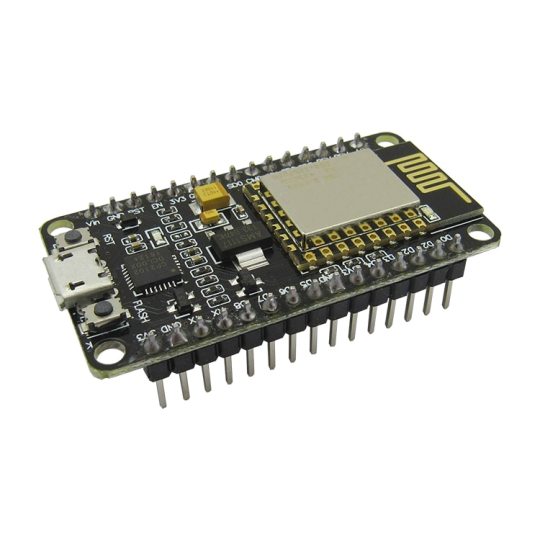
lastest_volume
0
Just For Today
Click Here To Visit The Shop
N€W Wireless module NodeMcu 4M bytes Lua WIFI Internet of Things development board based ESP8266 esp-12e for arduino Compatible
0 notes
Photo
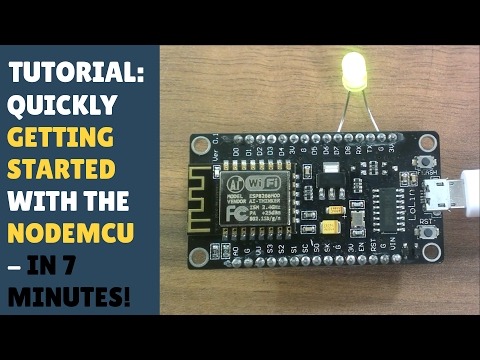
TUTORIAL: Quickly getting started with NodeMCU / ESP8266 12E - In 7 mins! Beginner Friendly! Arduino
0 notes
Text
New Version ESP8266 NodeMCU LUA CP2102 ESP-12E Internet WiFi Development Board Open Source Serial Wireless Module Works Great for Arduino IDE/Micropython from SongHe

We are proud to stock the fantastic New Version ESP8266 NodeMCU LUA CP2102 ESP-12E Internet WiFi Development Board Open Source Serial Wireless Module Works Great for Arduino IDE/Micropython.
With so many on offer these days, it is wise to have a product you can have faith of durability. The New Version ESP8266 NodeMCU LUA CP2102 ESP-12E Internet WiFi Development Board Open Source Serial Wireless Module Works Great for Arduino IDE/Micropython is certainly that and will be a superb buy.
For this amazing value, the New Version ESP8266 NodeMCU LUA CP2102 ESP-12E Internet WiFi Development Board Open Source Serial Wireless Module Works Great for Arduino IDE/Micropython comes widely recommended and is a regular choice amongst lots of people. SongHe have included some great touches and this equals good value.
The article was originally published here!
0 notes
Text
Pixel LED - Fireless Cracker Tree with Sound & Code, Arduino Programming & Coding
Pixel LED – Fireless Cracker Tree with Sound & Code, Arduino Programming & Coding
Following is the CODE to copy & Paste in Arduino IDE Sketch:- #include <Adafruit_NeoPixel.h> #define neo_pixel_pin 6 #define number_of_neo_pixel 47 #define piezo 5 #define dimmer 30 long freqIn; long blow1; long blow2; unsigned int last_num =0; int brightness = 128; Adafruit_NeoPixel strip = Adafruit_NeoPixel(number_of_neo_pixel,neo_pixel_pin, NEO_GRB + NEO_KHZ800); uint32_t red_color =…

View On WordPress
#ARDUINO UNO#CODING for cracker tree#DIY Electronics fireless cracker tree with sound for School projects#Electric Uncle Hatwale#Electronics fireworks with sound#ESP8266 NodeMCU 12E#Free Code for Oixel Led Cracker Tree & Chakari#Free Education Platform#LED STRIP PIXEL PROGRAMMED DECOR LIGHTING EFFECTS#Multitech Education for you#PIXEL LED LIGHTING EFFECTS WITH SOUND ARDUINO BASED#Programming and Coding for fireless cracker tree#SOUND
0 notes
Photo

Gearbest: Wireless Module CH340 CP2102 NodeMcu V3 V2 Lua WIFI Internet of Things Development Board Based ESP8266 ESP-12E with PCB Antenna Coupon: Flash Sale Price: 8.01$ http://bit.ly/3m3Xibf
0 notes
Photo

Illustration Photo: Connecting two Arduino based microcontroller devices, an Uno R3 and ESP8266 NodeMCU 12E to demonstrate a network enabled smart sensor platform (credits: ~~ zorro ~~ / Flickr Creative Commons Attribution 2.0 Generic (CC BY 2.0))
Digital Challenge - Solutions to build an Artificial Intelligence of Things system
GE Hydro France is looking for solutions to Build an AIOT (Artificial Intelligence of Things) system of systems:
GE Hydro are looking for mature companies, comfortable with IIOT/Artificial Intelligence/Tiny Machine Learning & Arduino with strong knowledge in embedded devices /electronics and libraries building to help them achieve a promise that the component will share its Health condition.
In this challenge, they expect an industrialized solution on a specific chosen GE use-case to accelerate their developments with external skilled resources. If the experience is a success, GE Hydro France will pursue on other asset types
CHALLENGE CONTEXT
‘Today, we are living in a world of expectation and are addicted to connectivity and structured information. GE Smart components is a response to these trends. However, to acquire information is difficult and associated costs are more than ever a concern for our customers.
PROBLEM STATEMENT AND AS-IS SITUATION
GE Hydro addresses sensing and data collection with Condition Monitoring Systems on critical components of the plant. Raw analog data are collected with cables & processed on a local server where they build features and interpretations but this strategy becomes difficult on smaller components where the return on investment is not profitable.
CURRENT CHALLENGES
Today, microcontrollers are evolving fast and become a great platform to collect, process and classify information at low cost, but GE Hydro assets are working in harsh environment and ‘off the shelf’ IOTs are not well industrialized to survive and do not exhibit sufficient reliability and cybersecurity to become Industrial IOTs.
SUCCESS CRITERIA
Time to Market, set-up time, deployment costs and solution versatility to GE Hydro’s Assess families.
DIGITAL CHALLENGE OWNER PROFILE
As part of GE Renewables Energy, GE’s Hydro business provides a comprehensive range of various solutions (Large & Small new Hydro Projects, Storage, Digital solutions), from design to commissioning, as well as Services for the maintenance and upgrades of all the plants through their life cycle.
DIGITAL CHALLENGE OWNER RESPOSIBILITES
Resources and manpower to work with innovators to implement the technology solution Mentoring and follow-up Access to facilities (GE workbench) and knowledge Technical reviews and sign off meetings to ensure the implementation phase runs according to plan If the pilot project is successful, opportunity to bid to implement the solution on other assets for GE Hydro
DIGIFED AND THE DIGITAL CHALLENGE OWNERS OFFER YOU:
The opportunity to respond to a real-world industry challenge adding a relevant use case to your unique value proposition. Up to €110k in funding – representing 70% of your project’s declared budget. Added value to your product, through high-level technical expertise, innovation support and access to pilot sites to deploy your solution If the pilot project is successful, opportunity to bid to implement the full solution for the Digital Challenge Owner Innovation management support focusing on sustainable business development – to help your innovation get to the market via DigiFed and the Smart Anything Everywhere ecosystem. Digital Innovation Hub (DIH) services to identify technical partners, commercial opportunities in Europe and receive tailored help, webinars and boot camps through the DigiFed project.
Submit your pre-selection form before 27th October 2020
Check more https://adalidda.com/posts/HePoex7nPhohyB3F7/digital-challenge-solutions-to-build-an-artificial
0 notes
Text
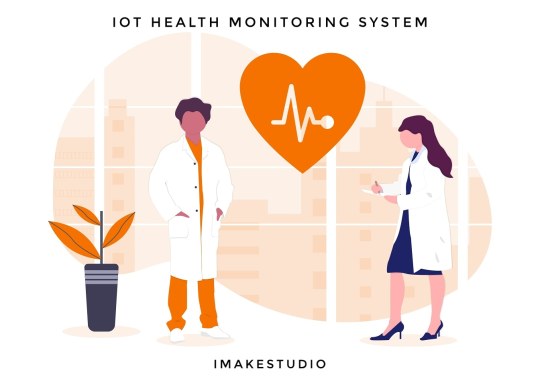
IoT based health monitoring systems using esp8266 12e
Download now in play store
Link in bio
#iotprojects #IoT #nodemcu #electronics #followforfollowback #fun #happy #art #instadaily #engineeringproject #innovation #likeforlikes #embeddedsystems #programming #connected #internet #automation #followme #engineeringproject #makerfaire #ecg #health #healthmonitor #patient
0 notes
Photo

Follow us @uglandindia Node MCU-CH340 Wireless Module NodeMcu (LoLin) WIFI Internet Of Things Development Board Based ESP8266 - CH340 ESP-12E Visit www.uglandindia.com Download our android app from Google play store UG Land India Shopping app Discount coupon - APP10 with 10% discount applicable on mobile app Discount coupons - UGLAND with 5% discount applicable to direct website #uglandindia #uglandapp #ugland #shopping #Robotics #packaging #Electronic #module #sensor #electronicitems #wifi #wireless #wifimodule #esp #esp8266 #esp32 #usb #usbserial #technique #technology #embedded #computer #integrated #bluetooth #arduinoproject #scienceproject #serialport #store #Electronicstore #shoppingapps https://www.instagram.com/p/B-kMMSbph7-/?igshid=1w0lyxhbl8czk
#uglandindia#uglandapp#ugland#shopping#robotics#packaging#electronic#module#sensor#electronicitems#wifi#wireless#wifimodule#esp#esp8266#esp32#usb#usbserial#technique#technology#embedded#computer#integrated#bluetooth#arduinoproject#scienceproject#serialport#store#electronicstore#shoppingapps
0 notes
Text
product name : ESP8266 NodeMCU CP2102 board
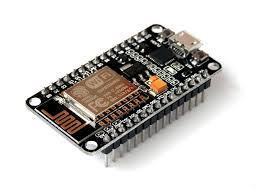
price : ৳ 390.00 product link : https://sigmatechbd.com/product/esp8266-nodemcu-cp2102-board/
Features of ESP8266 NodeMCU CP2102 board
Wi-Fi Module – ESP-12E module similar to ESP-12 module but with 6 extra GPIOs.
USB – micro USB port for power, programming and debugging
Headers – 2x 2.54mm 15-pin header with access to GPIOs, SPI, UART, ADC, and power pins
Misc – Reset and Flash buttons
Power – 5V via micro USB port
Dimensions – 49 x 24.5 x 13mm
Wi-Fi Module – ESP-12E module similar to ESP-12 module but with 6 extra GPIOs.
USB – micro USB port for power, programming and debugging
Headers – 2x 2.54mm 15-pin header with access to GPIOs, SPI, UART, ADC, and power pins
Misc – Reset and Flash buttons
Power – 5V via micro USB port
Dimensions – 49 x 24.5 x 13mm
ESP8266 CP2102 NodeMCU LUA ESP-12E WIFI Serial Wireless Module
Built-in Micro-USB, with flash and reset switches, easy to program
Full I/O port and Wireless 802.11 supported, direct download no need to reset
Arduino compatible, works great with the latest Arduino IDE/Mongoose IoT/Micropytho
0 notes
Text
V3 Wireless module NodeMcu 4M bytes Lua WIFI Internet of Things development board based ESP8266 ESP-12E for arduino Compatible (Discount: 35 % ) #Wireless #module
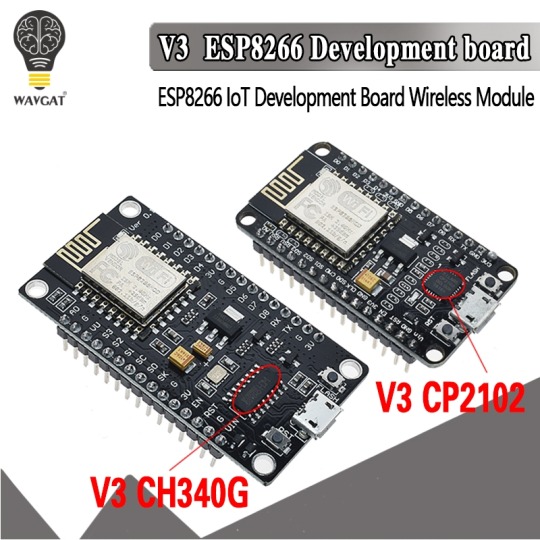
V3 Wireless module NodeMcu 4M bytes Lua WIFI Internet of Things development board based ESP8266 ESP-12E for arduino Compatible (Discount: 35 % ) US $1.87 (Discount: 35 % ) from Electronic Components - Supplies my new fed http://s.click.aliexpress.com/e/mlWIDNLK via V3 Wireless module NodeMcu 4M bytes Lua WIFI Internet of Things development board based ESP8266 ESP-12E for arduino Compatible (Discount: 35 % ) #Wireless #module
0 notes
Photo
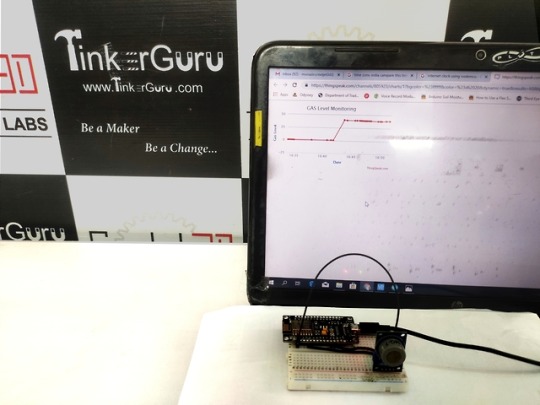
Gas Level Monitoring Over Internet Using ESP8266, Gas Sensor & thingspeak serverIn this project we will learn about Gas Level Monitoring Over Internet Using ESP8266 & Gas Sensor Module, i.e MQ7. We will measure the quantity of gas in percentage and send it over the internet using the thingspeak server. With this system, the data can be monitored remotely staying at any part of the world. We just need gas/smoke/LPG sensor like MQ2/MQ3/MQ5/MQ7/MQ135 that is directly connected to Nodemcu ESP8266-12E Module.ThingSpeak is an open source Internet of Things (IoT) application and API to store and retrieve data from things using the HTTP protocol over the Internet or via a Local Area Network.#AIMToInnovate/ #Tinkerguru/#atalinnovationmission/ #NITIAayog/ #StemChange/#RobotsMovie/ https://goo.gl/Z2h9Ro
0 notes
Link
For just €5.78 Brand Name: AITEXM ROBOT Condition: New Supply Voltage: 1 Dissipation Power: 1 Operating Temperature: 1 Model Number: Wireless module NodeMcu V2 is_customized: Yes Type: module
0 notes